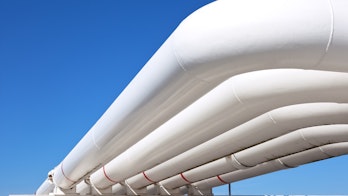
Energy Security
Reliable, affordable access to all fuels and energy sources
The IEA has been at the heart of international energy security for 50 years – working to avoid, mitigate and manage energy disruptions and crises. While the Agency’s mandate initially centred on oil security, its work has since broadened to include the security of natural gas, electricity and clean energy supply chains.
Threats to energy systems are constantly evolving. The IEA continually monitors and analyses these threats, including geopolitical risks, cyberattacks on energy infrastructure, supply chain disruptions and extreme weather events.
On 24 and 25 April, 2025, the IEA will convene an International Summit on the Future of Energy Security, hosted by the UK government in London. The event will gather world leaders to address traditional and emerging risks related to energy security in an era of geopolitical strains, technological transformation and a changing climate.
Oil security
The IEA was founded in 1974 to ensure oil supply security. While much has changed in the global energy landscape since then, the security of oil supply remains a pressing concern for governments across the globe. Worldwide oil consumption reached a record high in 2023, and while dependence on oil is set to lessen in many parts of the world in the coming decades as clean energy transitions advance, the threat posed by oil supply disruptions will not disappear anytime soon.
Even once global demand starts to decline structurally, oil will remain an important part of the energy mix for some time. There is also good reason to believe that oil supply disruptions are even more likely to occur in the coming decades than they are today. This is due to an elevated risk of supply-demand imbalances, increasing supply concentration for both crude oil and oil products, a highly uncertain geopolitical outlook, and a plethora of additional risks, such as the growing threat of cyberattacks and the increasing frequency of extreme weather events.
One of the IEA’s key tools is an oil stockholding system that requires member countries to hold stocks equivalent to at least 90 days of their net oil imports. IEA members are also obliged to maintain demand restraint programs to rapidly reduce oil consumption during disruptions.
The IEA’s oil emergency response mechanisms have proven to be a key stabilising force in global oil markets. Since 1991, the IEA has coordinated five collective responses to major oil supply disruptions, bringing critical additional supplies to oil markets amid turbulence triggered by wars, geopolitical strife and extreme weather events. As recently as 2022, the IEA coordinated the largest collective response in its history, involving the release of just over 180 million barrels of oil stocks in response to the market turmoil that followed Russia’s invasion of Ukraine.
Even in the absence of a stock release during a market-disrupting event, the availability of IEA emergency stocks can help prevent panic among market participants and reduce economic damage.
IEA total oil stocks, end-August 2024
OpenGas security
Natural gas supply security is critically important in today’s complex and interconnected energy system. Supply disruptions can have major socio-economic impacts, as was demonstrated following Russia's full-scale invasion of Ukraine in February 2022. Over the course of 2022 and 2023, Russian pipeline gas deliveries to Europe fell by almost 120 billion cubic meters, triggering a global energy crisis that drove up gas and electricity prices, fuelled inflation and further heightened geopolitical risks.
The IEA responded swiftly to this crisis by developing a 10-Point Plan on Reducing the European Union’s Reliance on Russian Gas. Shortly after the onset of the crisis, a Task Force on Gas and Clean Fuels Market Monitoring and Supply and Security was established, and in February 2023, an IEA Ministerial Meeting on Gas Markets and Supply Security was held to discuss and further coordinate the crisis response.
The IEA continues to closely monitor gas markets. The Agency’s quarterly gas market reports provide insights on current market conditions, trends and gas supply security risks, as well as recommendations to governments and industry. As part of its regular reporting on gas market developments, the IEA has been publishing a Global Gas Security Review annually since 2016. Additionally, IEA ministers have requested that the Agency further explore how to enhance the flexibility, transparency and security of global gas supply, including the potential development of voluntary gas storage and reserve mechanisms.
Electricity security
Electricity already underpins many crucial aspects of modern economies and societies, and its role is only set to expand. Between now and 2035, electricity demand is set to grow six times as fast as overall energy demand as a result of factors like the adoption of electric vehicles, air conditioning use, the digitalisation of the economy, the uptake of artificial intelligence and progress on expanding electricity access. Its share in final energy consumption is projected to double by 2050.
As a result of the increasing electrification of the energy sector, ensuring a reliable and secure power supply is more important than ever. Yet new threats are emerging, from a rise in cybersecurity threats to more frequent climate impacts on infrastructure. Clean energy transitions also bring benefits and fresh challenges. They can improve energy security through a more diverse mix of electricity sources and reduced reliance on imported fuels. At the same time, they require greater flexibility in electricity systems to accommodate variable renewable energy sources like wind and solar.
Countries are implementing a wide range of solutions to tackle these issues. These include enhancing cross-border grid infrastructure and power trade, adapting regulatory frameworks and market designs to better integrate renewables, scaling up energy storage, reinforcing supply chains, and building resilience against cyberattacks and extreme weather events.
The IEA plays a central role in helping countries navigate this changing landscape and the evolving role of policy makers. Through its in-depth analysis, the Agency provides insights into emerging electricity security risks, offers guidance on best practices for policy development and supports policymakers with data-driven solutions, while fostering international cooperation to ensure secure, sustainable and affordable electricity.
World electricity generation in the Stated Policies Scenario, 2010-2035
OpenCritical minerals
Critical minerals such as copper, lithium, nickel, cobalt and rare earth elements are essential raw materials for many clean energy technologies, from wind turbines to electric vehicles and storage technologies. Demand for these minerals is growing quickly as clean energy transitions gather pace – requiring greater action to ensure the building out of secure, sustainable and responsible supply chains.
The IEA has taken a leading role in guiding countries towards critical mineral supply security. The Agency publishes an annual outlook for critical mineral markets and hosted a first-of-its-kind Critical Minerals and Clean Energy Summit in 2023. With the support of its members, the IEA is also developing the IEA Critical Minerals Security Programme, with the aim of creating a handbook of critical minerals supply mechanisms that can be applied widely by the IEA’s members and beyond.








